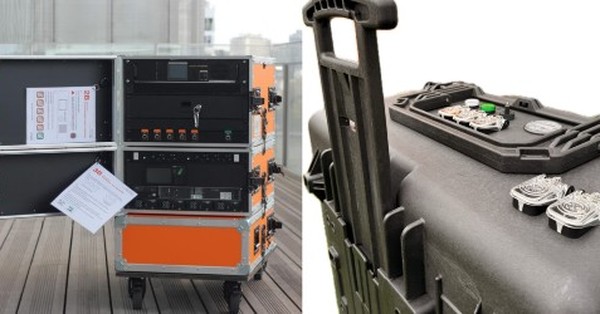Orange SafetyCase adds OneWeb LEO for sovereign crisis connectivity
Orange Business has embedded Eutelsat’s OneWeb low Earth orbit (LEO) connectivity into its SafetyCase units to harden communications resilience for emergency operations and critical enterprises.
What’s new in SafetyCase with LEO
SafetyCase—Orange Business’s portable emergency telecoms unit—now bonds terrestrial access with OneWeb’s LEO satellite backhaul to keep voice, data, and video online when fixed and mobile networks fail. The move adds low-latency satellite links from a European operator to a solution already engineered and built in France, aligning with sovereignty and continuity mandates across the EU.
Who benefits from SafetyCase
The target users include first responders, public safety agencies, local authorities, operators of vital importance (OVIs), and essential enterprises. These stakeholders need assured communications during power outages, natural disasters, cyber incidents, or large-scale events when terrestrial infrastructure is degraded or congested.
Why LEO resilience matters now
Climate-driven disasters, grid stress, and cyberattacks are escalating uptime risk. EU frameworks like NIS2 and the Critical Entities Resilience (CER) Directive sharpen expectations for continuity and incident response. LEO adds a robust, geographically independent path that supports modern, IP-based coordination tools—push-to-talk over LTE/5G (MCX), live video, GIS—and does so with the latency profile field teams require.
How LEO transforms real-time crisis communications
OneWeb’s LEO architecture addresses performance and availability gaps that have limited traditional satellite’s role in real-time emergency operations.
Lower latency for faster decisions
LEO orbits cut round-trip latency dramatically versus GEO, enabling interactive apps—voice, PTT/MCPTT, video feeds, telemedicine, and command-and-control dashboards—to function reliably. This reduces coordination friction at the edge of an incident.
Complementing terrestrial networks, not replacing them
In a PACE (Primary, Alternate, Contingency, Emergency) strategy, LEO backhaul augments fiber, microwave, and 4G/5G. When terrestrial paths fail or congest, SafetyCase can fail over to satellite without reconfiguring edge devices, preserving continuity for mission-critical traffic.
Sovereign control and supply-chain assurance
For European public-sector buyers and critical infrastructure, using a European LEO operator strengthens jurisdictional control, supply-chain assurance, and compliance with procurement and data-handling requirements.
Inside SafetyCase: architecture, deployment, and operations
SafetyCase is an energy-autonomous, ruggedized unit that spins up secure Wi‑Fi connectivity and aggregates multiple links with policy-based control.
Two form factors for distinct missions
The Mobile Unit is a plug-and-play kit designed to be operational within seconds for fast-moving teams. The Crisis Center variant is a portable command post that non-specialist staff can deploy in under 30 minutes to support a crisis cell, with extended power autonomy for sustained operations.
Hybrid networking with on-scene Wi‑Fi bubbles
On scene, SafetyCase creates one or more Wi‑Fi “bubbles” for responders and staff laptops, tablets, cameras, and IoT sensors. Under the hood, software-defined policies bond or switch across available paths—fixed, 4G/5G, and now OneWeb LEO—prioritizing critical applications and maintaining sessions during failover.
Power autonomy and ruggedized design
Integrated batteries and power management deliver long runtimes independent of the grid. Rugged housings and field-ready accessories support deployment in harsh weather, with options to recharge from generators or vehicles to extend endurance.
Security and SD‑WAN/SIEM integration
The solution is designed for secure operations: encrypted tunnels to enterprise or government networks, role-based access, and integration with existing SD-WAN, SIEM, and identity controls. It can transport mission-critical services (e.g., MCX over LTE/5G) and connect to sensors, bodycams, and UAV feeds used for situational awareness.
Field-proven performance in real incidents
SafetyCase has already supported real incidents, providing early validation of deployment speed and resilience.
Recent real-world deployments
Units were used during severe flooding in Valencia, Spain, and after Cyclone Chido hit Mayotte in December 2024. These activations highlight the value of pre-staged, easy-to-operate kits that restore connectivity under extreme conditions.
Metrics that matter for continuity
Teams should track mean time to connectivity, effective throughput under contention, uptime during power loss, and application-level KPIs (voice MOS, video frame stability). With LEO, expect improved responsiveness for interactive apps and more consistent performance when cell sites are overloaded.
Strategic impact for public safety and critical infrastructure
Adding European LEO to a sovereign, portable platform elevates resilience from an aspiration to an operational capability.
Public safety, civil protection, and defense
Agencies gain a rapidly deployable, sovereign backhaul that supports multi-agency coordination. The combination with Orange Business’s Defense & Security expertise creates a pathway to standardize kits, training, and SLAs across regions and services.
Utilities and OT-intensive sectors
Grid operators, oil and gas, transport, and water utilities can keep field maintenance, SCADA gateways, and inspection teams connected during outages or remote interventions, without relying on a single network domain.
Distributed enterprises and branch sites
Retail, logistics, and manufacturing can fold SafetyCase into business continuity plans to maintain POS, inventory, and safety systems during terrestrial disruptions, avoiding revenue loss and compliance breaches.
Next steps for resilience and continuity leaders
Now is the time to operationalize multi-path connectivity and embed LEO-assisted kits into continuity and incident response plans.
Immediate actions to implement
Run a resilience gap assessment against PACE. Pre-stage SafetyCase units at priority sites and train non-specialists on setup. Integrate with SD-WAN and identity policies for zero-touch activation. Define application QoS and security baselines. Drill quarterly with realistic failure scenarios, including total grid loss.
What to watch in services and regulation
Monitor service evolution from Eutelsat OneWeb (capacity, coverage, enterprise SLAs), regulatory guidance on sovereignty and critical comms, and interoperability with MCX and public-safety LTE/5G. Track total cost of resilience, not just bandwidth cost, comparing avoided downtime and faster recovery against kit and service spend.
The bottom line for crisis connectivity
Orange Business’s integration of OneWeb LEO turns SafetyCase into a more capable, sovereign-grade crisis connectivity platform. For public safety and critical enterprises, it’s a pragmatic way to guarantee communications continuity when terrestrial networks—or the power grid—do not.








































